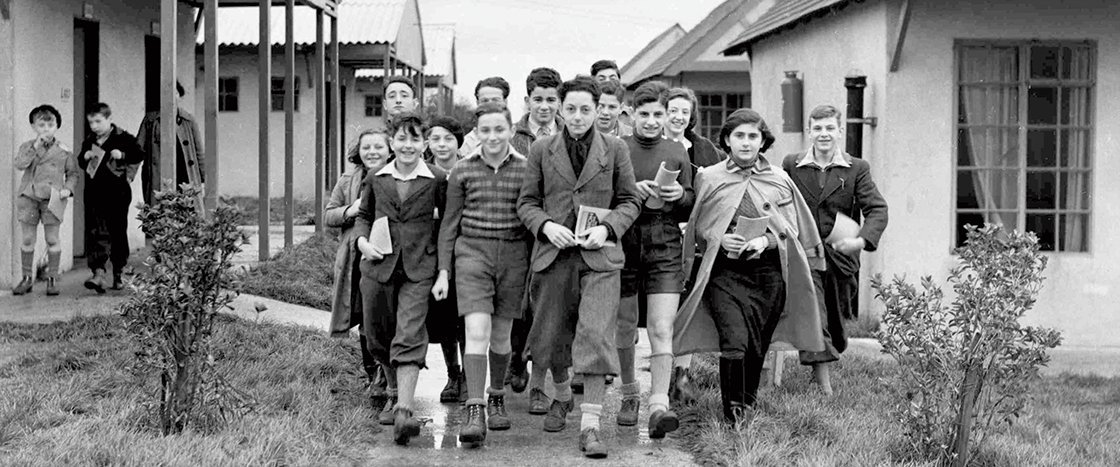On a chilly April morning in 1939, 14-year-old Lore Sulzbacher sat alone in an enormous train station in London. All around her, people were talking, but Lore didn’t know what they were saying. She didn’t speak a word of English.
Lore clutched her only possessions: a suitcase filled with clothes and photographs and her accordion, a musical instrument she loved to play. She wondered what was going to happen to her.
Only a few days earlier, Lore’s parents had said they were sending her away. Germany, where Lore lived, had become dangerous for Jewish people like them. Lore’s parents were among thousands of Jewish parents across Germany, Austria, and Czechoslovakia who were sending their kids—some less than a year old—to Britain to live with strangers. They were all part of a desperate plan to save the lives of thousands of children.
As Lore waited in the station that cold April morning, doubt crept into her mind. She didn’t know the family that had volunteered to take her in—not even their names. What sort of people would they be? Would they be kind? Terror washed over her. Why did her parents have to send her away?
On a chilly April morning in 1939, 14-year-old Lore Sulzbacher sat alone in a huge train station in London. All around her, people were talking. Lore didn’t know what they were saying. She didn’t speak a word of English
Lore clutched her only possessions: a suitcase filled with clothes and photographs and her accordion, a musical instrument she loved to play. She wondered what was going to happen to her.
Just a few days earlier, Lore’s parents had said they were sending her away. Germany, where Lore lived, had become dangerous for Jewish people like them. Thousands of Jewish parents across Germany, Austria, and Czechoslovakia were sending their kids—some less than a year old—to Britain to live with strangers. They were all part of a desperate plan to save the lives of thousands of children.
As Lore waited in the station that April morning, doubt crept into her mind. She didn’t know the family that had volunteered to take her in—not even their names. What sort of people would they be? Would they be kind? Fear washed over her. Why did her parents have to send her away?

